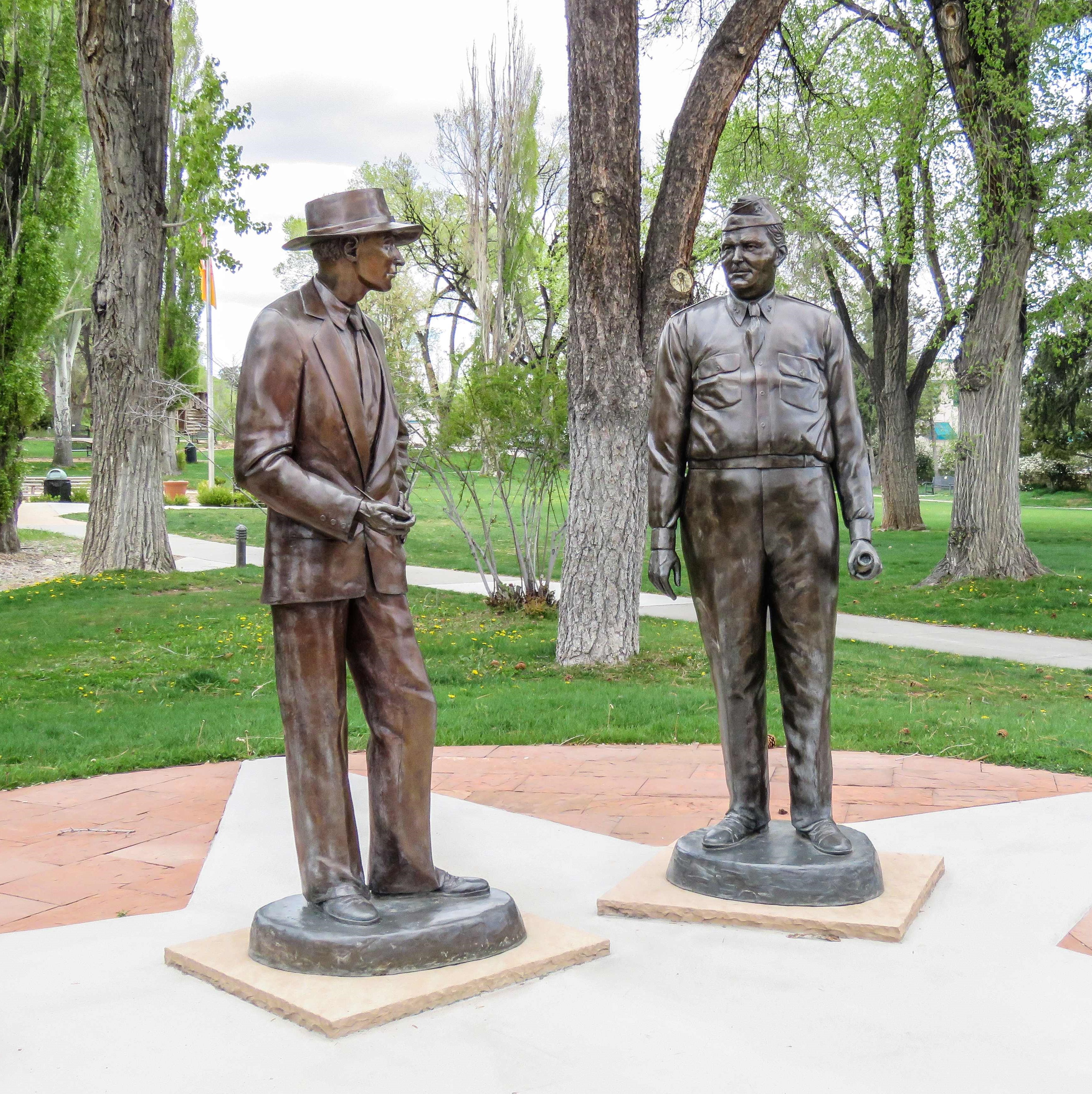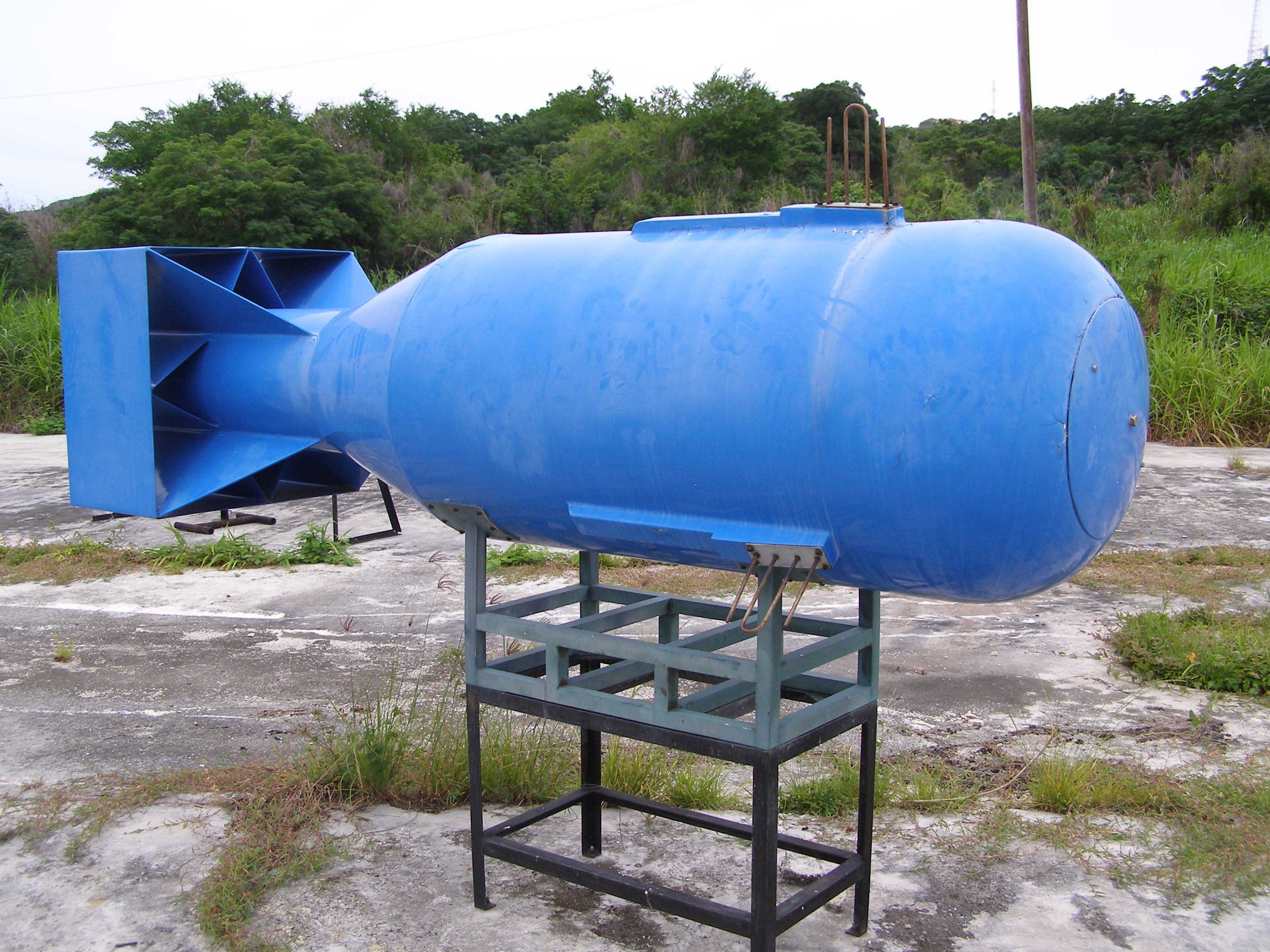Blog 10/17/2023 - MHT's "Oppenheimer" Movie Review
96th Academy Award Wins
Best Picture
Best Director – Christopher Nolan
Best Actor – Cillian Murphy
Best Supporting Actor – Robert Downey Jr.
Best Cinematography
Best Film Editing
Best Original Score
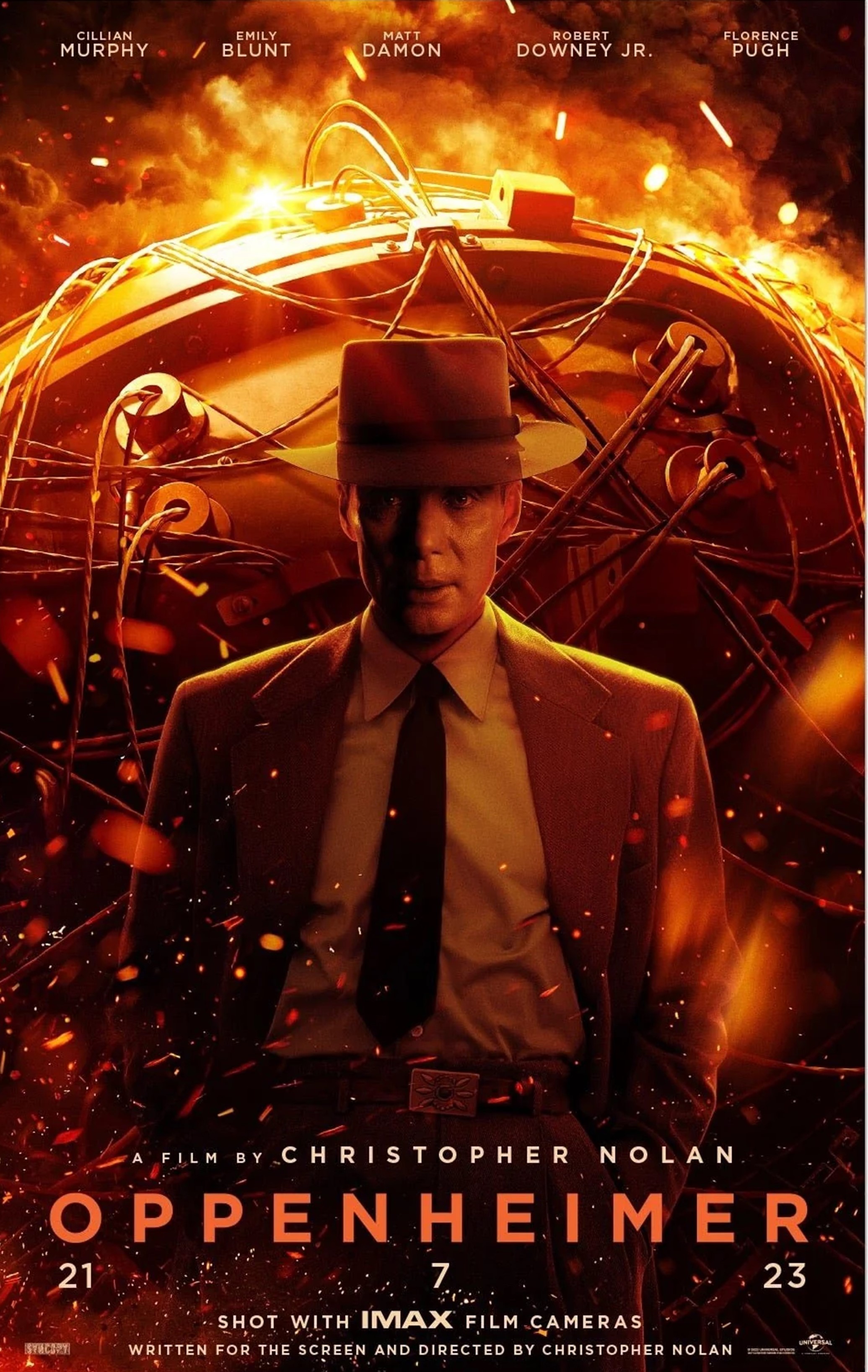
MHT completes its tenth blog in our Atomic Bomb / Defeat of Japan / Victory in the Pacific Blog series. MHT reviews the hit film “Oppenheimer” in relation to our other nine atomic bomb related blog posts.
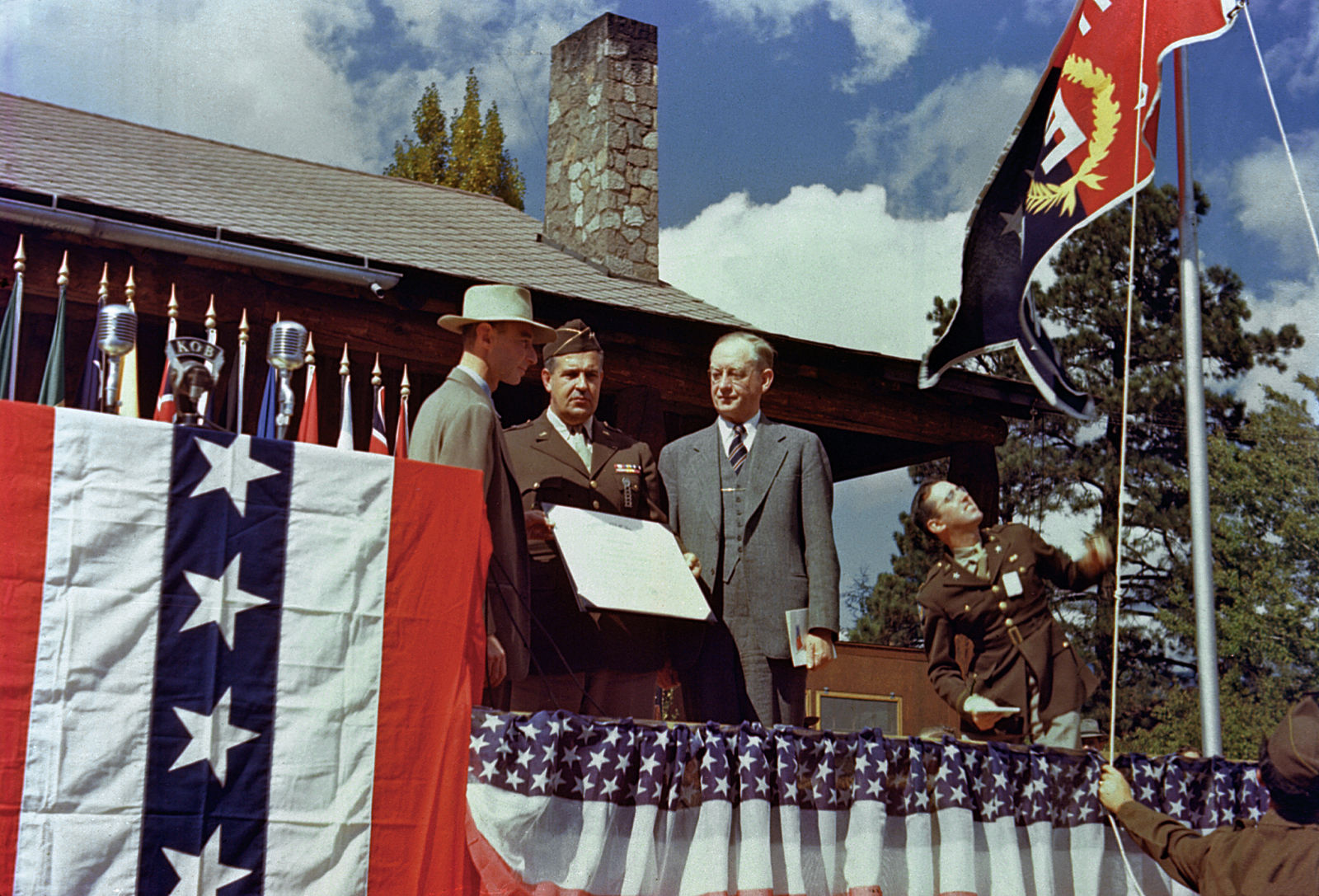
Los Alamos ranch house,16 October 1945. Robert Oppenheimer (left), Major General Leslie Groves, U.S. Army (center) at the ceremony to present the Los Alamos Laboratory with the Army-Navy E Award.
The tale all begins with Imperial Japan’s attack on the U.S. Pacific Fleet & U.S. Army installations on Oahu, Hawaii. The Imperial Japanese Navy killed 2,403 Americans on 7 December 1941. (I would argue with a seeming math challenged politician that Pearl Harbor cost us 2,402 more Americans than January 6th & the Islamic Terrorists on 9/11 killed 2,976 more!)
See our Pearl Harbor - Hawaii - https://miltours.com/index.php?route=information/information&information_id=70

In Greek mythology, Prometheus is sometimes referred to as the God of Fire. He is best known for defying the Gods of Mount Olympus by stealing fire and giving it to humanity in the form of technology, knowledge, and more generally, civilization. Zeus, King of the Greek Gods punished Prometheus by condemning him to eternal torment for his transgression. Prometheus was bound to a rock, and Zeus sent an eagle to eat his liver. In a torturous “Groundhog Day” his liver would then grow back overnight, only to be eaten again the next day in a never-ending cycle until he was freed by the mighty Heracles.
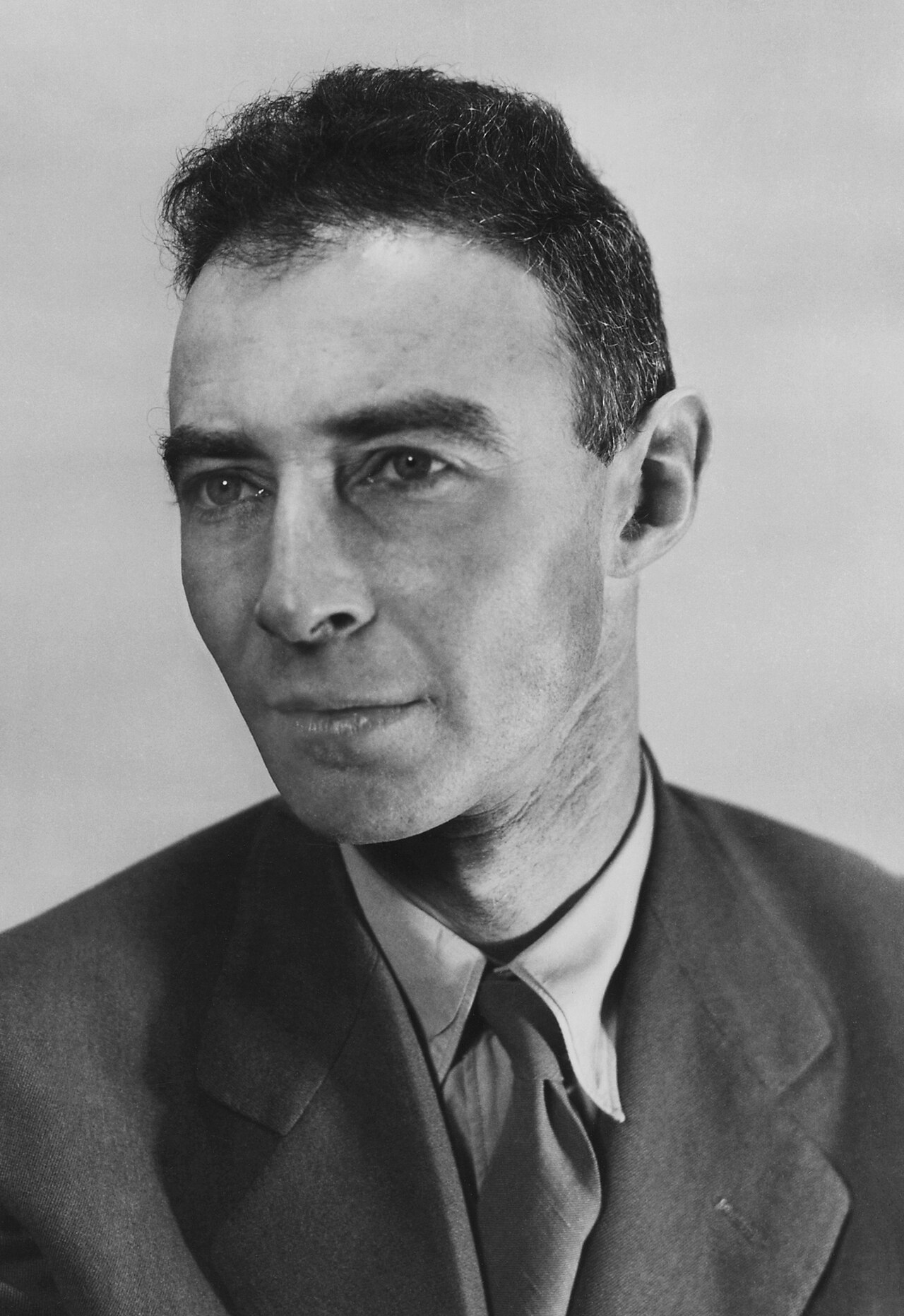
The movie “Oppenheimer” screenplay, was adapted by renowned Director Christopher Nolan from Kai Bird & Martin J. Sherwin's Pulitzer Prize-winning 2005 book appropriately titled American Prometheus: The Triumph and Tragedy of J. Robert Oppenheimer. The book tells the story of American physicist J. Robert Oppenheimer (played by Cillian Murphy - Nolan’s Batman movies villain Scarecrow, Director Luc Besson’s “Anna” CIA Master Miller & Shelby, the leader of his post WWI Birmingham gang the “Peaky Blinders”),

who headed the World War II Manhattan Project that developed the first atomic bomb. It was a massive undertaking in distilling a 721-page book that took 25 years to write into three hours and probably deserved a 10-part HBO miniseries.
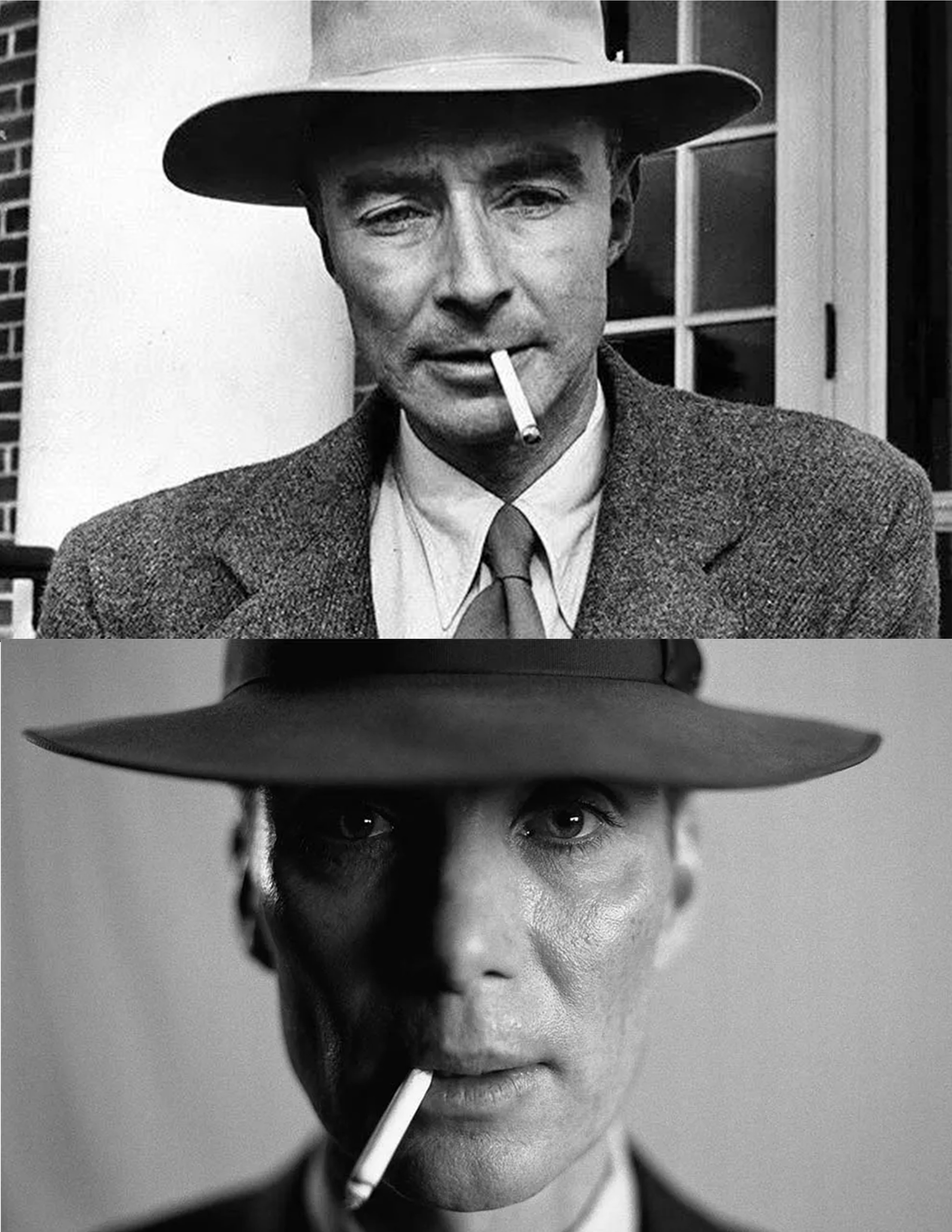
It is a Masters class in filmmaking by Director Nolan, a three-act but non-sequential series of highlights pertaining to the title scientist's life. Act One, we are introduced to J. Robert Oppenheimer, we see that he is an incredibly intelligent man whose sheer commitment to his craft earns him the utmost respect of many of his peers, even as a young student. During a European university foray the movie points out Oppenheimer’s sense of self-worth issues when he has a Snow-White-Evil-Queen moment poisoning an apple for a Cambridge professor he dislikes. He would settle as a Physics Professor at California Institute of Technology & then University of California Berkley. He became a popular, self-confident & witty campus figure smoking Chesterfields, he regularly socialized with his bright young acolytes. For dinner parties, he served his guests “eggs à la Oppie,” flavored with Mexican chilies often playing bartender, mixing his favorite cocktail, the martini. He gained a reputation as a ladies’ man with students & faculty wives alike but it was the mercurial Jean Tatlock who was “Robert’s truest love.”
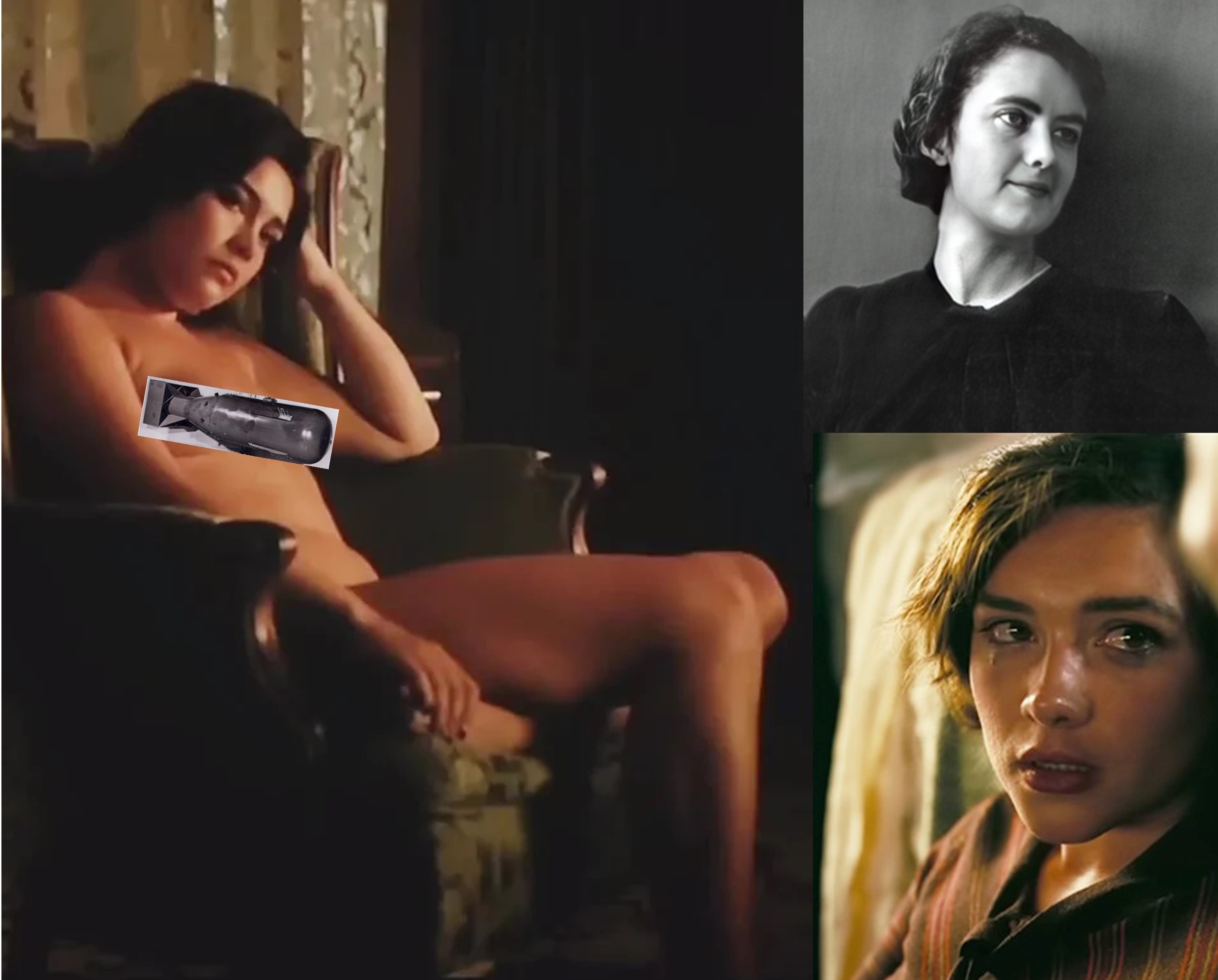
In 1936, Oppenheimer was drawn to her beauty but was burdened with her bouts of depression & what would later haunt him as she was a card-carrying member of the Communist Party in San Francisco who wrote for a Party newspaper. Although never a member himself he donated & helping fund relief organizations fighting Spanish Civil War fascists. Played by Florence Pugh, the Tatlock character creates two of the film’s largest controversies, one being that some would say her gratuitous nudity & sex scenes fostering a “R” rating. [In some countries Pugh’s nudity is covered (not as cleverly as this blog) with a Computer-Generated Imagery black dress.] The second, ruffled the vast Indian audience when Nolan has Tatlock pull the Hindu scripture Bhagavad Gita off a shelf while they are making love & has Oppenheimer read, "Now I am become Death, the destroyer of worlds" which has somehow been elevated to a “war on Hinduism!” The film depicts Oppenheimer and Tatlock as close friends & occasional lovers in the years following their breakup. The relationship cooled once Oppenheimer committed to the Manhattan Project. U.S. Army security agents confirmed one rendezvous in California in June 1943 when he spent the night at her apartment. Her depression was worsening & resulted in her suicide on January 4, 1944 by drowning herself in her bathtub.
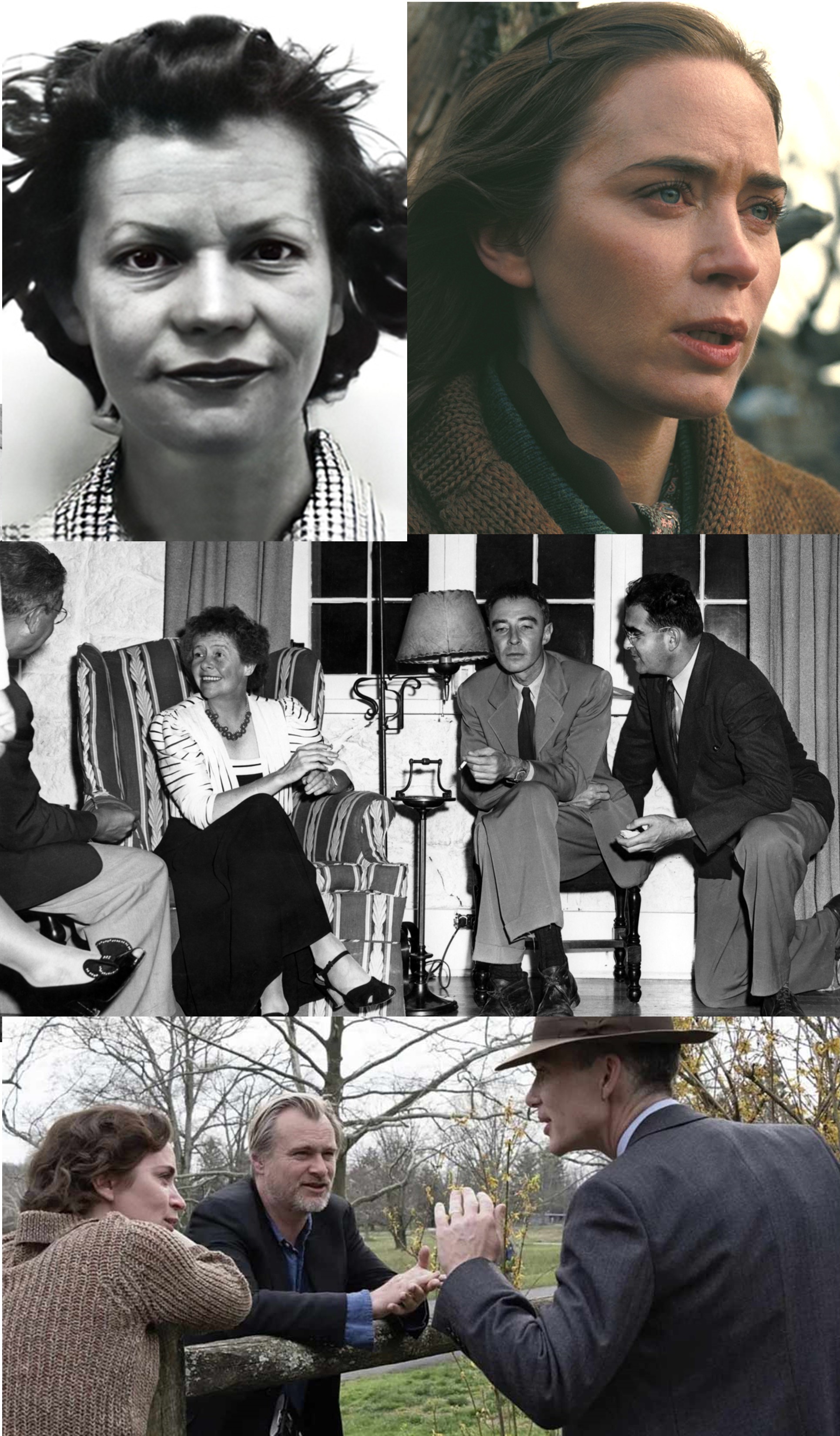
In 1939, after his relationship with Tatlock imploded, Oppenheimer met his future wife at a California Institute of Technology Garden Party in Pasadena. Although, Katherine “Kitty” Puening was married at the time, but Oppenheimer’s friends welcomed the graduate student’s effervescence despite the scandalous breakup of her marriage after being impregnated with Oppenheimer’s baby. Like Tatlock, Kitty had also been a dues-paying member of the Communist Party. She grew up well-to-do, descended from a Prussian metallurgist who immigrated to Pittsburg’s steel industry. After their 1940 marriage, she gave her new husband a professorial makeover dressing him in more pricey suits & tweed jackets. Kitty played by Emily Blunt who was starring with Murphy again as both had major roles in The Quiet Place Part II.
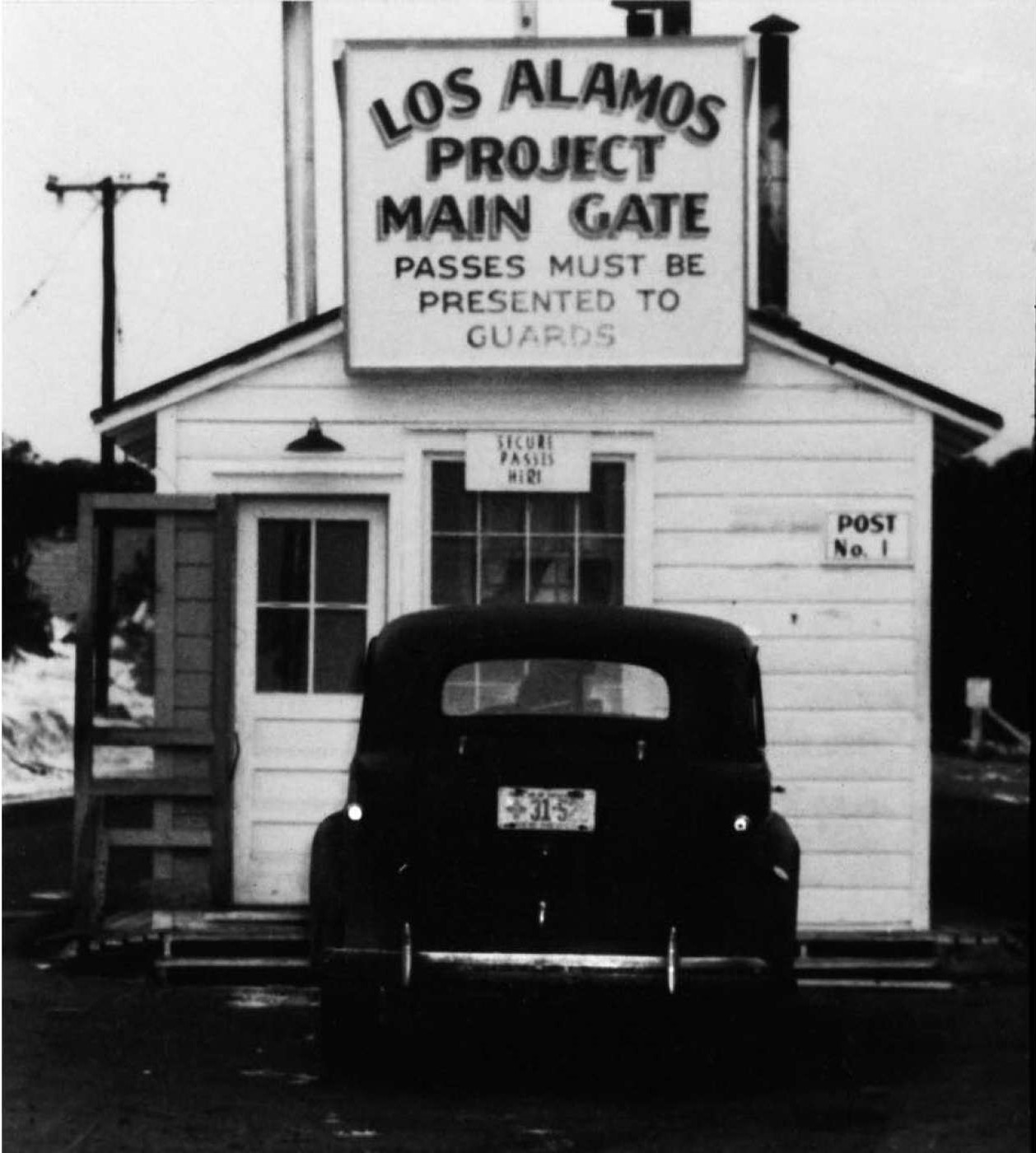
The Film’s Act Two is the riveting creation of the bomb using the full scientific & industrial base of the U.S.A. Nolan reminds the audience that the Nazis could very well have been working on their own weapon of mass destruction. When Nazi Germany invaded Norway, they had gained the “heavy water” plant & one of the two materials which could moderate the energy of the secondary neutrons emitted by nuclear fission. Heavy water & graphite were the prime candidates for moderating neutron energy, so this raised fears that the German scientists were well ahead in research on producing a bomb from this reaction. The film conveys this real sense of urgency throughout the Los Alamos scenes, driving the scientists to work even faster to beat the enemy to the bomb.
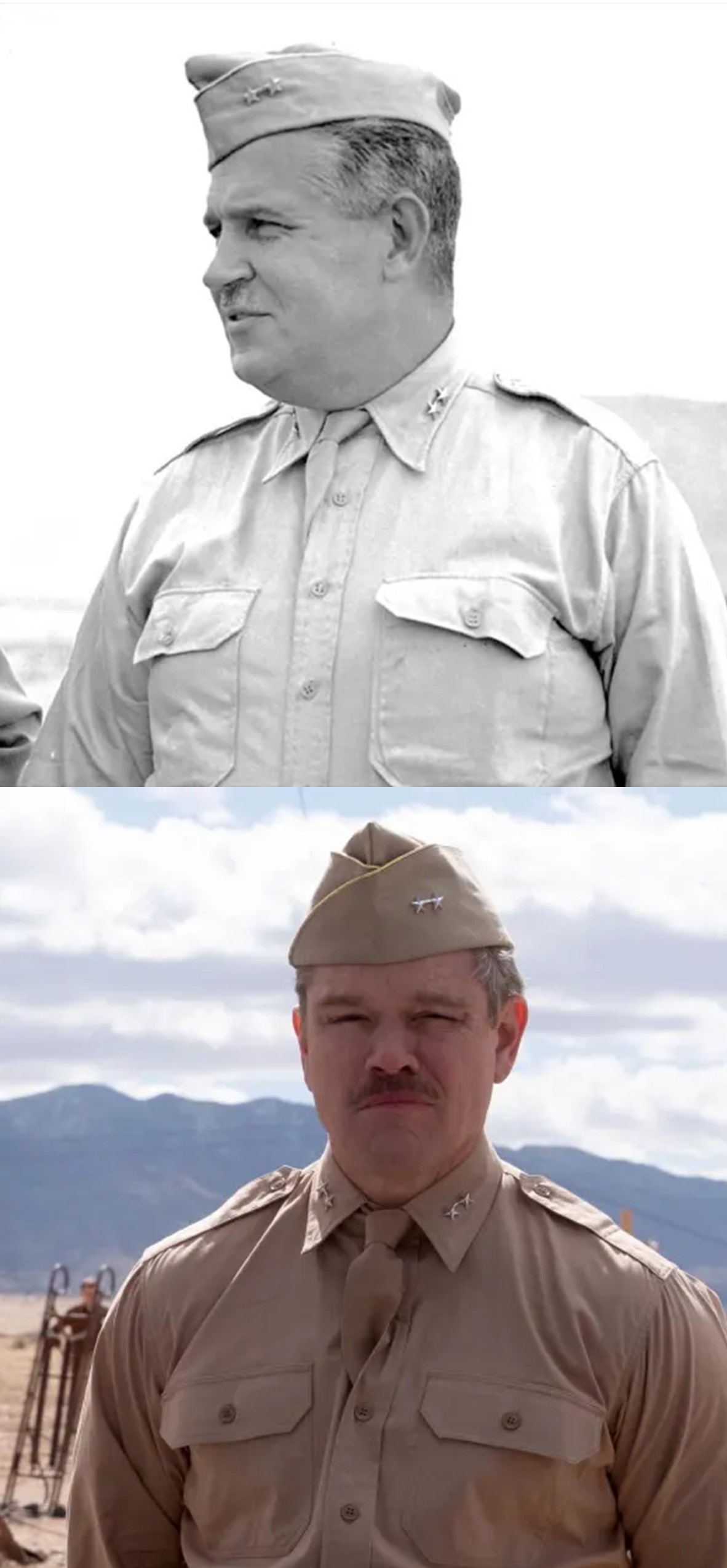
The Manhattan Project partnership between the brilliant scientist & the master military logistician Major General Leslie Groves drives the Second Act. Groves (played by Matt Damon) is a U.S. Army Corps of Engineers officer who prior to taking on WWII’s greatest construction project had overseen the construction of the Department of War’s Pentagon, the world’s largest office building. We see Groves form an alliance with the physicist, often questioning the ramifications of theoretical physics & experimenting with nuclear power. Groves's ignorance allows the audience to learn along with him when the intricacies of nuclear fission are explained to us in basic detail. Grove provides the tools for Oppenheimer's WWII war-ending engine & achievement.
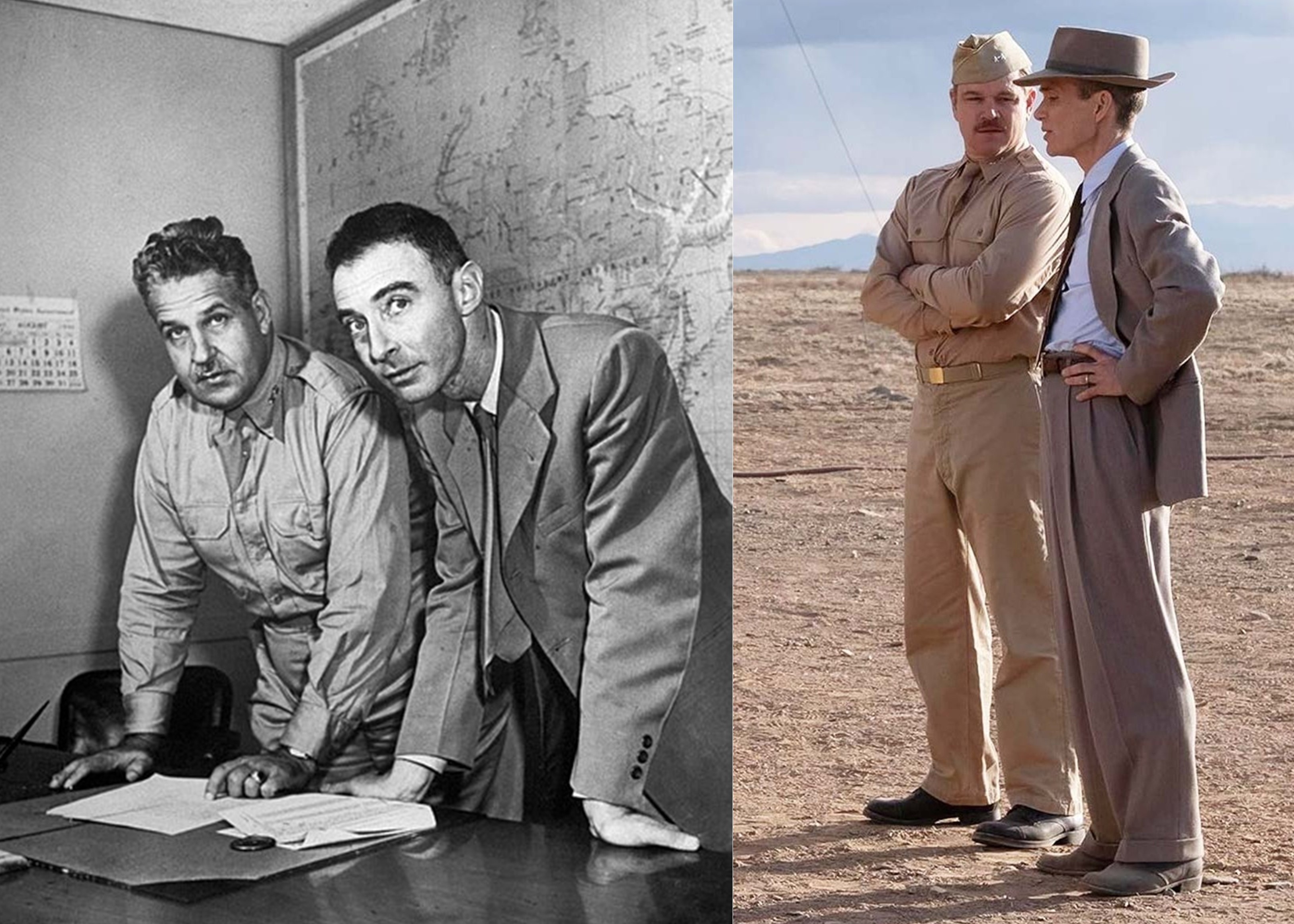
The Third Act is dominated by the rivalry between Lewis Strauss, a superb villain turns for Robert Downey Jr. who shines after mailing in a ton of Marvel movie roles. It is his best character since his mocking of Hollywood narcissism in Tropic Fury & one of his best roles in general. Strauss a government climber, is not viewed favorably by history due to his role in exposing Oppenheimer's ties to communism in the 1930’s during the Red Scare of the 1950’s. He holds such a jealous grudge against Oppenheimer, Nolan takes every opportunity to illustrate Strauss's two-faced nature in biding his time for the right moment to strip Oppenheimer of his security clearance & forever damage his reputation. Reportedly, Downey considers this his best film role to date, and it definitely seems like he is putting everything he has into this performance.
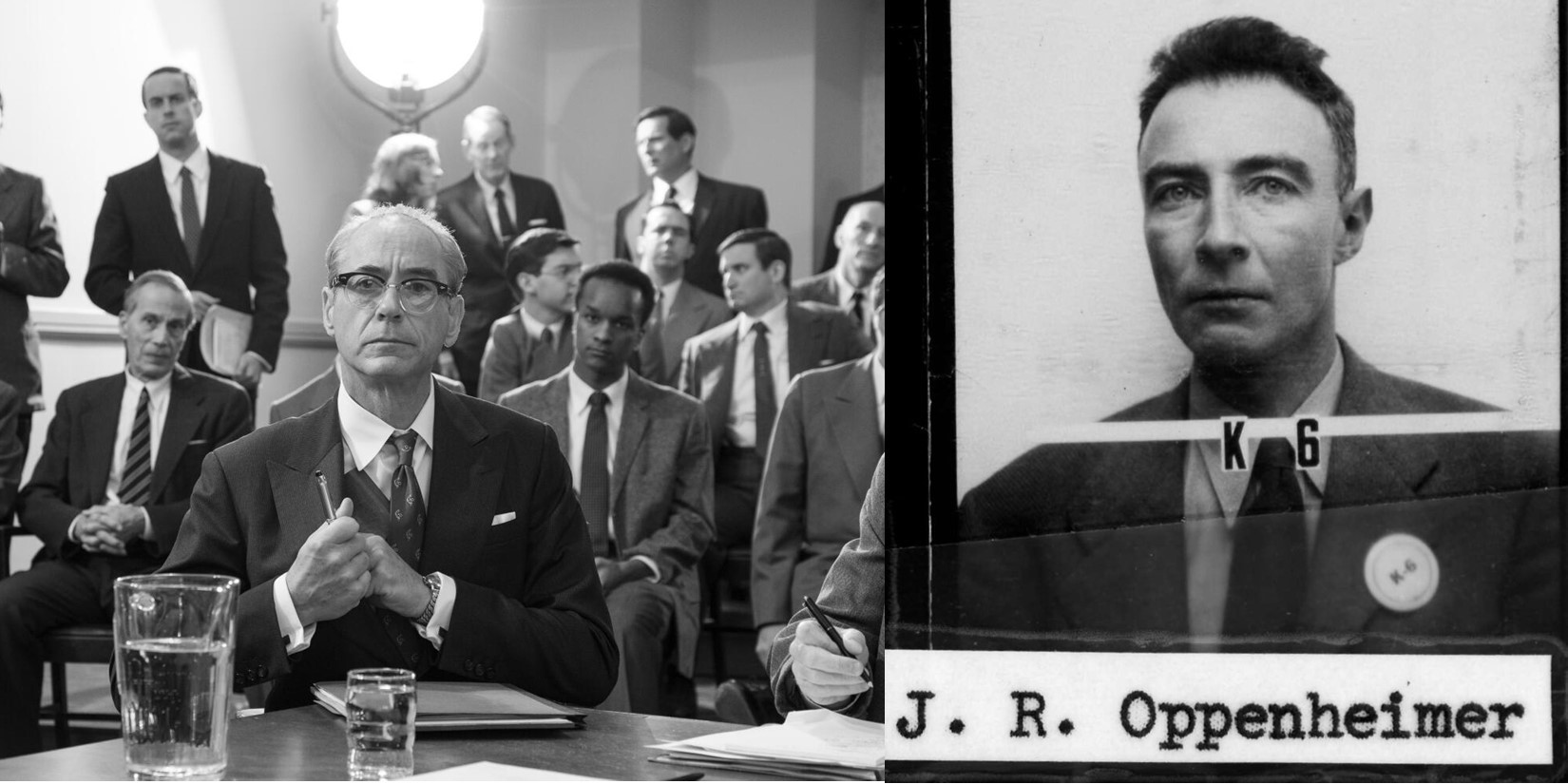
Nolan's direction keeps the viewer on the edge of his seat as we watch Oppenheimer, Groves and the rest of the scientists test out the prototypes of bombs with each explosion proving to be bigger & more powerful. Nolan is not a fan of green-screen Computer Generated Imagery in his movies, opting for more practical methods of showing each escalating bomb’s increasing power. As each bomb explodes, it can be likened to a ticking clock, with each blast clicking towards the end goal of developing the ultimate weapon. It comes to a conclusion with the Trinity Test & keeps viewers leaning in by using good old fashioned directorial proficiency.
The “Little Boy” (above.) Director Nolan, who trusts the viewer to keep up with his elaborately constructed puzzle-box multiple timeline narratives, also expects us to know a thing or two about WWII history. He wants to make a war movie that opens up a different perspective on WWII, to show how the it was finally ended not on battlefields but in classrooms, laboratories & finally, in the workshop of Oppenheimer’s mind.
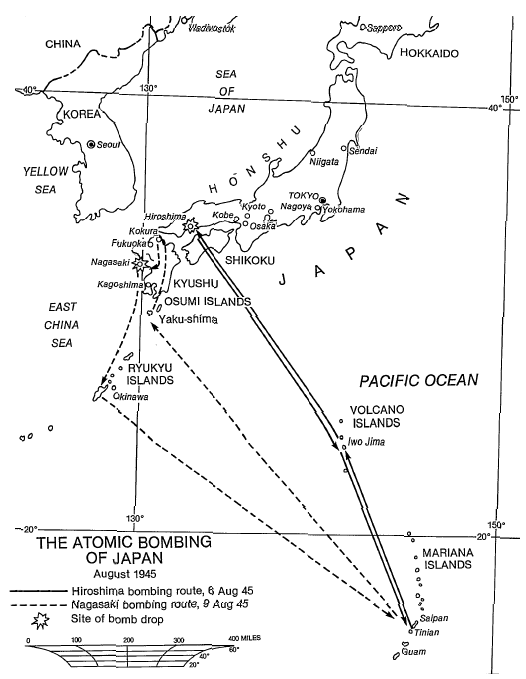
The Military Policy Committee wanted a “one-two punch” of atomic bombs to defeat Imperial Japan. Some advocated for a demonstration at a deserted location to warn the Japanese of the new weapon’s lethality. That was a none-starter, first, given the theoretical nature of this new technology, if it failed it would be a major embarrassment & embolden the enemy. Second, if successful, the Japanese could have disregarded the event as some kind of scientific trick. Third, and most importantly, if successful, the United States would have shot its bolt having used all the Uranium-235 created by the giant Y-12 factories at Oak Ridge, TN. With the slow refining process of the U-235 isotope, producing the amount needed for another bomb could take as long as six months. Oppenheimer “froze” the design of the uranium-based bomb at Los Alamos in February 1945.
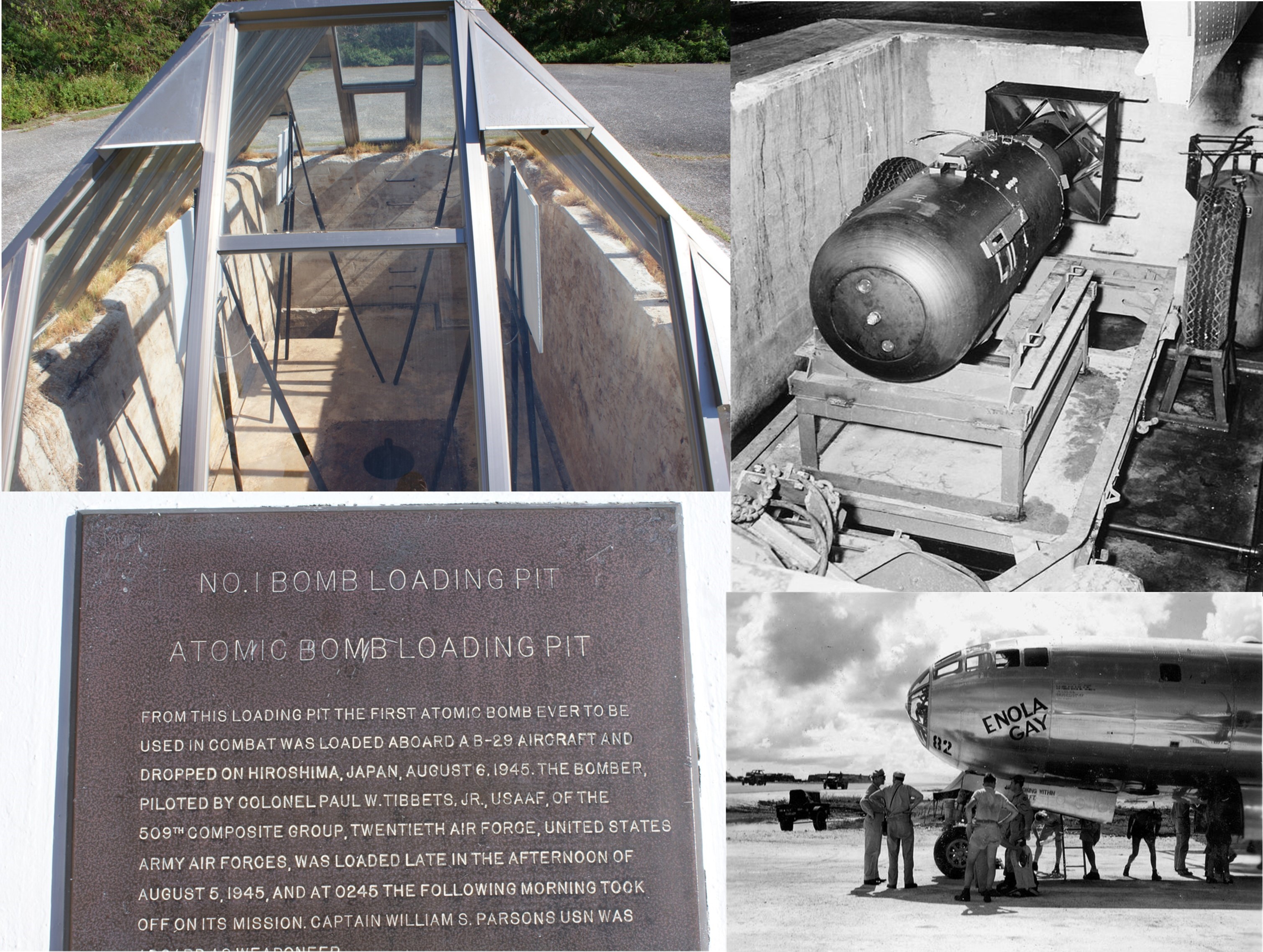
Known as the “Little Boy," the Hiroshima bomb, used 112 pounds of U-235, just about the bare-metal critical mass. The U-235 was formed into two sub-critical pieces, one of which was fired down a large gun barrel to slam into the other, starting the nuclear explosion. Analysis showed that less than 2% of the uranium mass underwent fission; the remainder, representing most of the entire wartime output was scattered uselessly around Hiroshima. The Little Boy gun-type atomic bomb dropped on Hiroshima on August 6, 1945, by the “silverplate” B-29 bomber “Enola Gay” from Tinian Island in the Marianas where the bomb assembly pit still remains.
Tinian: Atomic Bomb Island - https://miltours.com/index.php?route=information/information&information_id=104
The implosion-type bomb was used for both the Trinity “Gadget” device and the “Fat Man” (above), the Nagasaki bomb. The basis for this second method was through use of another isotope, Plutonium-239 (Pu-239). Physicists determined that Pu-239, a largely manmade element could more readily be produced & significantly less Pu-239 (14 pounds) was needed for a fissionable event made it even more attractive. Oppenheimer “froze” the general design of the plutonium weapon in March, 1945 but additional refinement of the Fat Man design still took up much of the Los Alamos personnel’s time to successfully solve the complex implosion asymmetry issues.

While both bombs were indeed science experiments, the Los Alamos physicists, scientists & technicians determined that a full test of the gun-type bomb was not required. A field experiment called the “Trinity Test” on 16 July 1945 of the nicknamed “Gadget” was important for several reasons. First, it would confirm the Pu-239 implosion design works & second the ease of isotope production from the Hanford, WA plant meant America could allow the production of multiple atomic weapons creating a stockpile. The successful Trinity explosion meant that not only did the United States have two viable weapons & designs. The USS Indianapolis sailed from San Francisco that day with the Little Boy bound for Tinian.
Fate of the USS Indianapolis - https://miltours.com/index.php?route=information/information&information_id=102
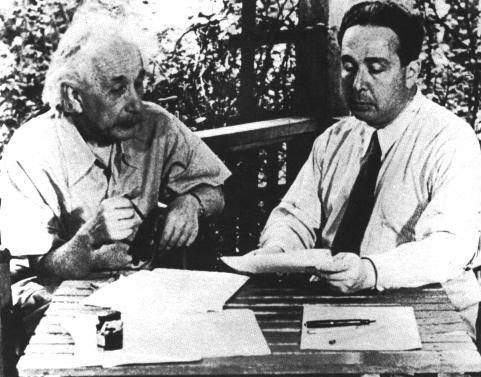
In August 1939, Hungarian-born physicists Leo Szilard & Eugene Wigner drafted the Einstein–Szilard letter, which warned the world of the potential development of "extremely powerful bombs of a new type." It urged the United States to acquire stockpiles of uranium ore and accelerate the research begun by Enrico Fermi & others into nuclear chain reactions. Scottish actor Tom Conti portrays the famed physicist Albert Einstein who developed the theory of relativity.
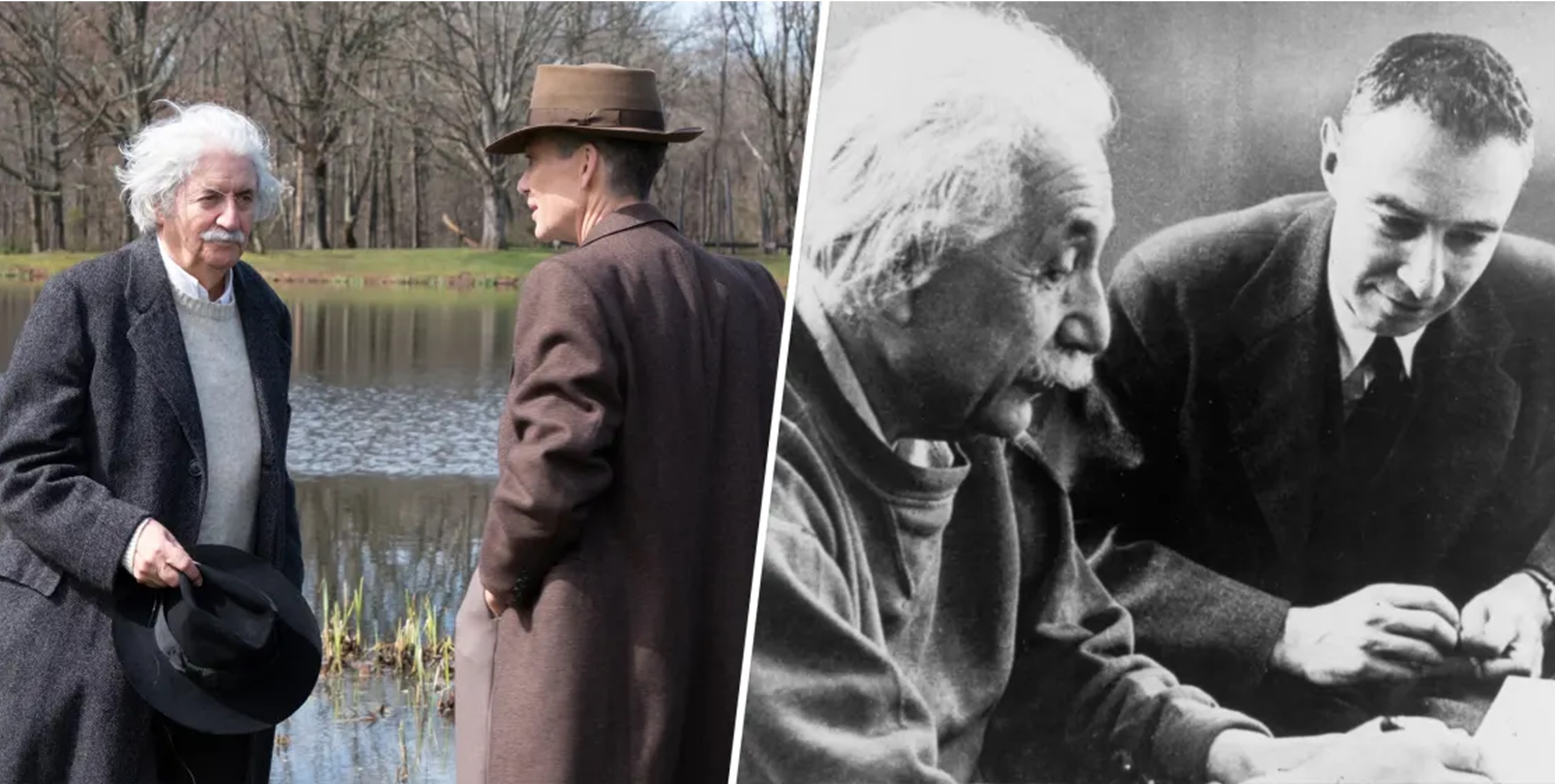
He signed the Einstein–Szilard letter, which was sent to President Franklin D. Roosevelt in order to alert him of Germany’s nuclear weapons program. In an interview with Newsweek Magazine after WWII, Einstein said, "Had I known that the Germans would not succeed in developing an atomic bomb, I would have done nothing.” Everyone has to be glad he didn’t know so the Russians didn’t get the bomb first!

A funnier controversy was the same date release of “Oppenheimer” by Universal Studios & “Barbie” Warner Brothers. Since both movies were released on July 21, media reports encouraging viewers to see both, on the same day, if possible, have coined the term “Barbenheimer.” The mostly cheerful memes combine Margot Robbie as Mattel’s famed doll with Cillian Murphy as the Manhattan Project physicist often with a mushroom cloud in the background. One meme showed Barbie with a mushroom-cloud hairstyle. Warner Bros.’ initial response to the mashups was positive. On July 31 Warner Bros Japan LLC issued a statement, “Because the movies ‘Barbie’ & ‘Oppenheimer’ were both released in America on July 21, there is currently a movement driven by overseas fans to watch them together (#Barbenheimer), but this is not an official movement. We find the reaction to this fan-driven movement from the official American account for the movie ‘Barbie’ to be extremely regrettable.” Warner Brothers Film Group quickly backpedaled in a statement, “Warner Brothers regrets its recent insensitive social media engagement. The studio offers a sincere apology.” They should have finished the mea culpa with “Now I become death, the destroyer of memes" but that would have made the humorless even more livid!
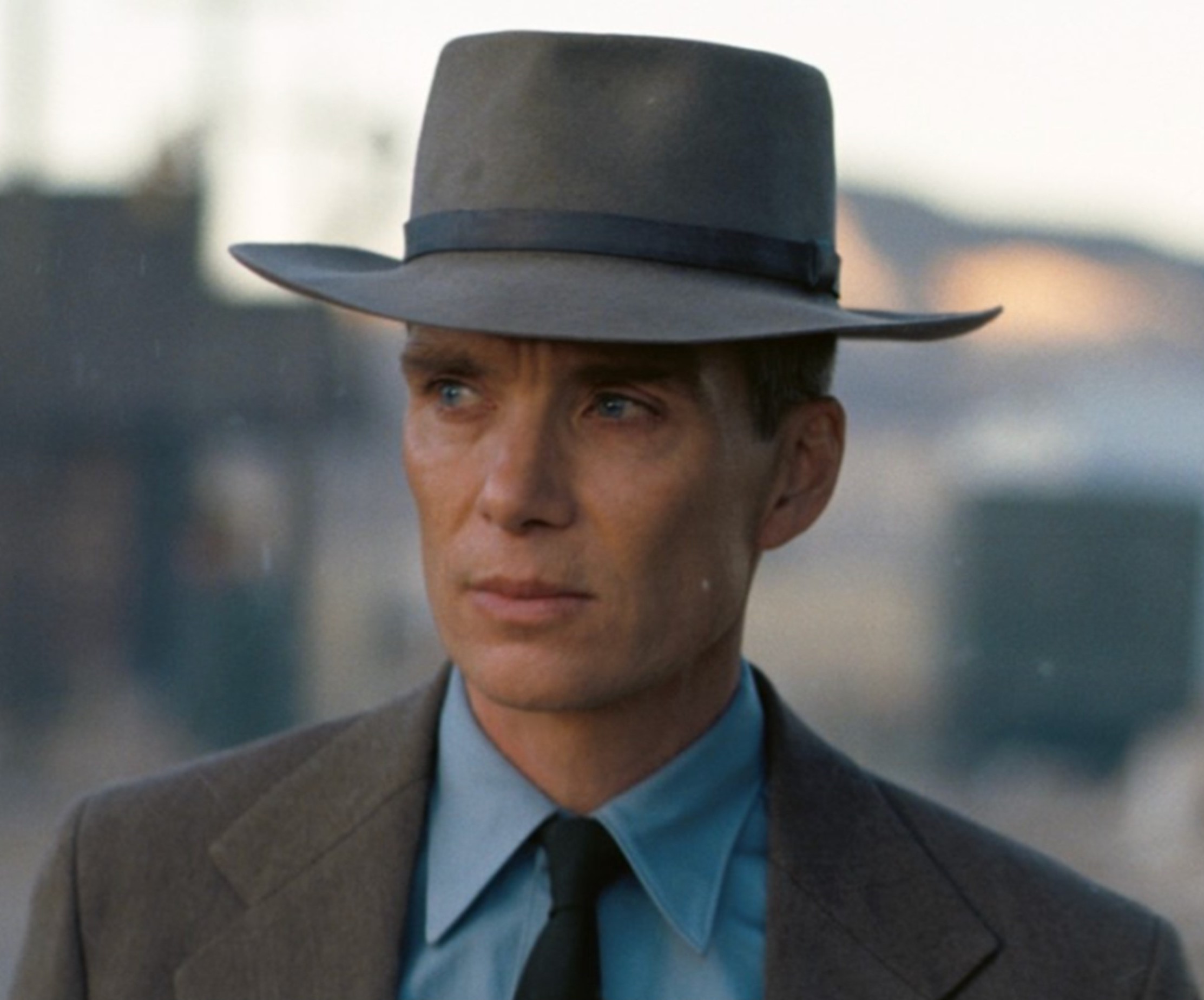
Oppenheimer is an Oscar-worthy intellectual thriller that is a masterpiece of both image and word. It is not for the faint of heart for complex ideas & a protagonist that has to conquer his human contradictions & ride herd on the greatest scientific project in the world’s history. Both Nolan & Murphy deserve Oscars & probably Downey too but Barbie will get something. The film is deserving of all its box office acclaim. There is never a better time to see the film with the current Israeli Crisis where weak leadership, rampant antisemitism & media moral turpitude may force the weapons second usage for survival of a religion & people against evil.
The Oppenheimer & Groves Statues in Los Alamos, NM.
